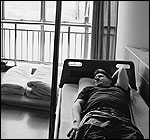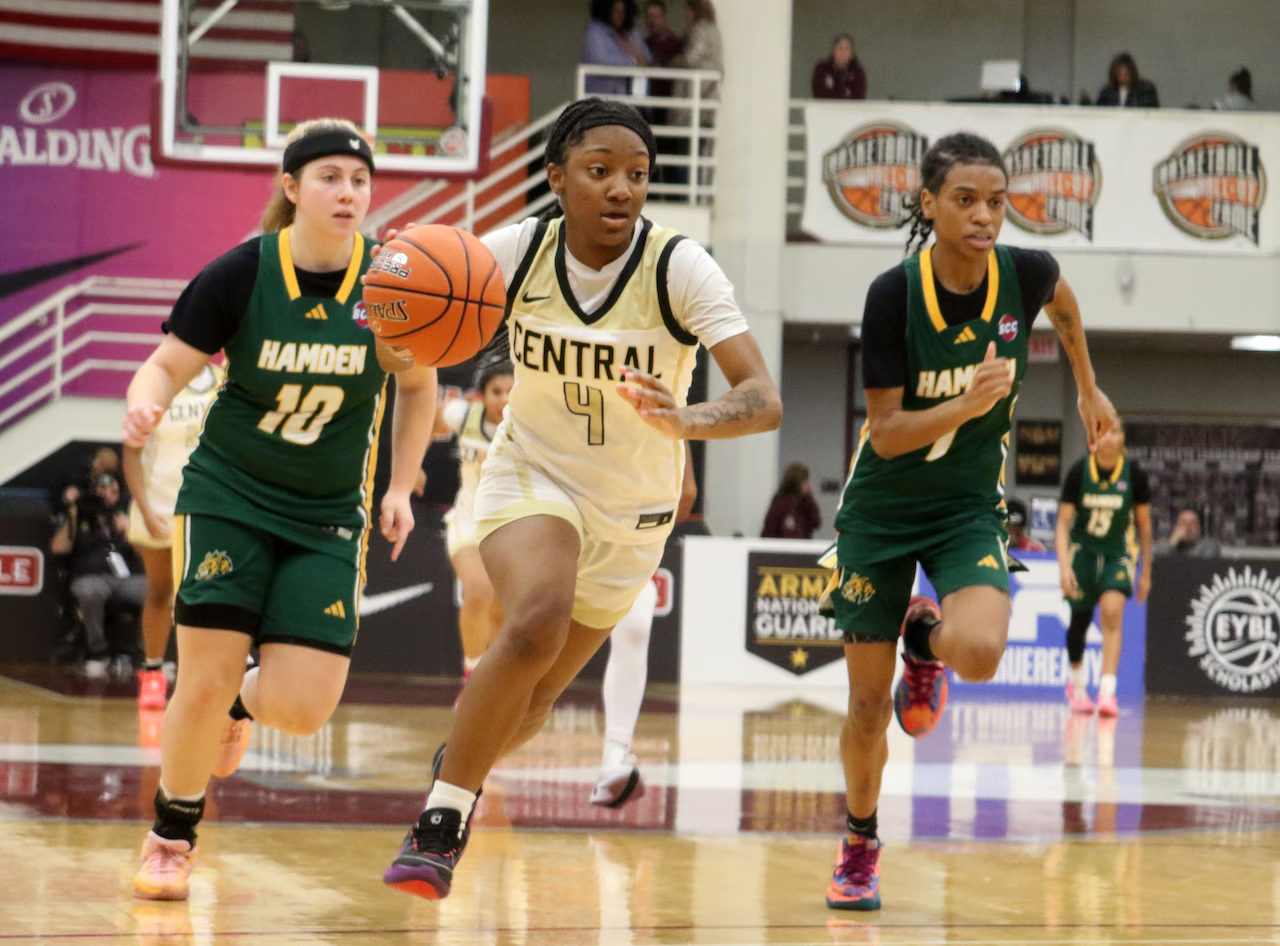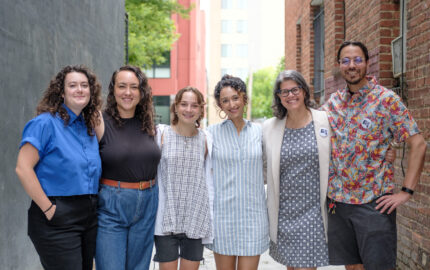
Is Local News the Answer?
“Unique local content” is by now a familiar phrase as print competes with digital media for readers’ attention. With constantly updated international and national news reporting and commentary just a click away, hometown readers need different reasons to go to their local newspaper, in print or online. In this issue of Nieman Reports, we will explore what local news reporting can look like and what a hometown focus can mean for journalists, newspapers, Web sites, and those who consume this news and information.
“I’ve got a great local story, but I need to go to China. How about it?” In so many words, that’s how I asked my editors for permission to write about a man named Hal Burrows, who lives in Charleston, South Carolina. Soon he would be going to China for the second time to have stem cells injected into his badly damaged spine, and I wanted to travel with him.
Twenty years ago Burrows was paralyzed in a bicycle accident. He’d fought hard and had regained some movement, only to see it slip away when he reached his forties. In 2006, he traveled to China for stem cell injections, one of the first Americans to do so, suddenly regaining movement in his left arm. He hoped for even greater improvement on this second trip.
Aside from exploring Burrows’ personal struggle to overcome his disability, this story held the promise of delving deep into a contemporary political controversy and societal debate. Stem cell treatments like those offered in China aren’t available in the United States because of governmental roadblocks and concerns in American medical circles that the treatments don’t work or aren’t safe. Now our newspaper had an opportunity to use a local man’s experience to educate our readers about stem cells, which some believe have the potential to be one of the more important advances in medical care since the discovery of penicillin.
I made my pitch, which combined aspects of all these arguments, but I doubted it would work. Though editors at large daily newspapers are often willing to dispatch reporters to faraway places, many small and medium papers across the country like The Post and Courier (circ. 100,000) now march to the drumbeat of local, local, local. During the past decade, the paper closed its bureau in Washington, D.C., and reduced or eliminated other in-state bureaus. Once dominated by national wire stories, The Post and Courier’s front page looks more and more like the local section. Though some readers grumble about this change, daily circulation is up, as is our readership on the newspaper’s Web site.
William Hawkins, the paper’s executive editor, is a vocal cheerleader for this heavier emphasis on local news. “Local is our future, but we’re not so local that we’re parochial,” he told me. To make room in the newsroom’s travel budget, he canceled a trip to an industry conference and told me and staff photographer Alan Hawes, who worked with me on suggesting this story, to get our visas.
Reporting in China
Soon we were 12 time zones from Charleston, in Dr. Sean Hu’s gleaming black Buick Riviera, weaving through the crowded boulevards of Shenzhen, China. Hu is chairman of Beike Biotechnology, one of a growing number of Chinese companies that charge foreign patients as much as $20,000 for stem cell treatments. Just 40 years old and trained in Sweden and Canada, Hu moved back to China several years ago and sold two medical supply companies to focus on stem cells. “China is where the money is,” he told us.
As we drove through Shenzhen, Hu talked about clinical trials his researchers had done and shared his thoughts about the Bush administration’s prohibition on embryonic stem cell research and medical use. He told us how he’d watched paraplegics walk after stem cell treatments. At times, he’d interrupt our conversation to point out skyscrapers, including one of the world’s tallest, or an exhibition center with the floor space of 30 Wal-Marts. Three decades ago Shenzhen was a mere fishing town of about 70,000 people; it now has more than 12 million residents and 120,000 factories, a stunning example of China’s economic transformation. Hu mentioned potential deals with venture capital firms in Great Britain and Silicon Valley. His cell phone rang every few minutes, with a female voice saying “You got message” in English. Hu epitomized how China’s boom has created a new generation of international high-tech entrepreneurs.
Hu’s story was compelling in itself, but our assignment was to bring to our newspaper’s readers a local story. To do this, we spent most of our time in the hospital with Burrows, and there we met other American patients, too. Some of these patients had experienced remarkable improvements after their stem cell injections. One partially blind patient from Florida regained his vision. Another told us he could relieve himself without mechanical help for the first time in years.
Others weren’t so satisfied. A few doors down from Burrows, a patient from Louisiana with a spinal injury told us how he had developed spinal meningitis after doctors at another company injected his back with stem cells. He also had no improvement after Beike’s expensive treatments. A Canadian father began to question whether the subtle improvements he had seen in his two paralyzed daughters were from physical therapy or the placebo effect. In the end, Burrows saw no changes after his second round of stem cells. He left China skeptical about the treatments, though hopeful that stem cells still might cure him one day.
In 2007, more than a dozen American newspapers wrote about people from their towns and cities traveling to China for stem cell treatments. Each was an emotional story about hope and determination. Few reported in any depth about the risks and controversy of these treatments. The time we spent in China resulted in a story entitled “Miracle or Mirage,” which was a three-part narrative that took readers inside the complex debate about stem cells, but it also wove into the story the universal theme of how hope can have the power to transform and to blind.
Finding Other Local Stories
Knowing the expense of our reporting trip to China—and certain The Post and Courier would not be sending us back to China anytime soon—during our time there we tried to find other “local” stories. This turned out to be a surprisingly easy task. On our way back from the hospital one afternoon, we traveled to a neighborhood in Shenzhen where 3,000 artists churn out fake van Goghs and Rembrandts in an assembly-line fashion, much the way McDonald’s cranks out burgers and fries. This scene framed a story about how cheap knockoffs affect Charleston’s art scene.
We also visited a factory owned by a Charleston-based lighting manufacturer and, by luck, met the company’s top executives, suitcases in hand, just after their 25-hour flight from the United States. Our tour of their factory helped to shape an in-depth story about how China’s boom directly affects businesses, employment and consumers in South Carolina. A few days later, we toured the port of Hong Kong. There we learned about some creative approaches used to squeeze containerized cargo into a place where land is scarce. This issue is of great importance to Charleston, which also has a large container port and is struggling to find new space to expand.
When I pitched the China trip, I felt I was pushing the envelope in describing it as an attempt to chase “local” stories. But I returned to Charleston convinced that we do a disservice to our readers when we think local reporting only happens when we stay close to home. In an increasingly interconnected world, the definition of what constitutes local news naturally must expand.
The question editors—and publishers—at daily newspapers confront is how to balance the costs and benefits of such reporting with their local obligation to cover city hall and lots of other local stories.
Our trip wasn’t cheap, costing about $7,000 for the two of us. But it wasn’t expensive, either, when one considers that it equals roughly the cost of sending sports reporters and photographers to two college bowl games. “If you think about it, everybody is going to have the same story about that bowl game,” Hawkins observed. “But nobody else had the stories we did.”
Tony Bartelme is senior projects reporter with The Post and Courier in Charleston, South Carolina. His work about China won the 2007 Associated Press Managing Editors award for international perspective for newspapers under 150,000 circulation.
Twenty years ago Burrows was paralyzed in a bicycle accident. He’d fought hard and had regained some movement, only to see it slip away when he reached his forties. In 2006, he traveled to China for stem cell injections, one of the first Americans to do so, suddenly regaining movement in his left arm. He hoped for even greater improvement on this second trip.
Aside from exploring Burrows’ personal struggle to overcome his disability, this story held the promise of delving deep into a contemporary political controversy and societal debate. Stem cell treatments like those offered in China aren’t available in the United States because of governmental roadblocks and concerns in American medical circles that the treatments don’t work or aren’t safe. Now our newspaper had an opportunity to use a local man’s experience to educate our readers about stem cells, which some believe have the potential to be one of the more important advances in medical care since the discovery of penicillin.
I made my pitch, which combined aspects of all these arguments, but I doubted it would work. Though editors at large daily newspapers are often willing to dispatch reporters to faraway places, many small and medium papers across the country like The Post and Courier (circ. 100,000) now march to the drumbeat of local, local, local. During the past decade, the paper closed its bureau in Washington, D.C., and reduced or eliminated other in-state bureaus. Once dominated by national wire stories, The Post and Courier’s front page looks more and more like the local section. Though some readers grumble about this change, daily circulation is up, as is our readership on the newspaper’s Web site.
William Hawkins, the paper’s executive editor, is a vocal cheerleader for this heavier emphasis on local news. “Local is our future, but we’re not so local that we’re parochial,” he told me. To make room in the newsroom’s travel budget, he canceled a trip to an industry conference and told me and staff photographer Alan Hawes, who worked with me on suggesting this story, to get our visas.
Reporting in China
Soon we were 12 time zones from Charleston, in Dr. Sean Hu’s gleaming black Buick Riviera, weaving through the crowded boulevards of Shenzhen, China. Hu is chairman of Beike Biotechnology, one of a growing number of Chinese companies that charge foreign patients as much as $20,000 for stem cell treatments. Just 40 years old and trained in Sweden and Canada, Hu moved back to China several years ago and sold two medical supply companies to focus on stem cells. “China is where the money is,” he told us.
As we drove through Shenzhen, Hu talked about clinical trials his researchers had done and shared his thoughts about the Bush administration’s prohibition on embryonic stem cell research and medical use. He told us how he’d watched paraplegics walk after stem cell treatments. At times, he’d interrupt our conversation to point out skyscrapers, including one of the world’s tallest, or an exhibition center with the floor space of 30 Wal-Marts. Three decades ago Shenzhen was a mere fishing town of about 70,000 people; it now has more than 12 million residents and 120,000 factories, a stunning example of China’s economic transformation. Hu mentioned potential deals with venture capital firms in Great Britain and Silicon Valley. His cell phone rang every few minutes, with a female voice saying “You got message” in English. Hu epitomized how China’s boom has created a new generation of international high-tech entrepreneurs.
Hu’s story was compelling in itself, but our assignment was to bring to our newspaper’s readers a local story. To do this, we spent most of our time in the hospital with Burrows, and there we met other American patients, too. Some of these patients had experienced remarkable improvements after their stem cell injections. One partially blind patient from Florida regained his vision. Another told us he could relieve himself without mechanical help for the first time in years.
Others weren’t so satisfied. A few doors down from Burrows, a patient from Louisiana with a spinal injury told us how he had developed spinal meningitis after doctors at another company injected his back with stem cells. He also had no improvement after Beike’s expensive treatments. A Canadian father began to question whether the subtle improvements he had seen in his two paralyzed daughters were from physical therapy or the placebo effect. In the end, Burrows saw no changes after his second round of stem cells. He left China skeptical about the treatments, though hopeful that stem cells still might cure him one day.
In 2007, more than a dozen American newspapers wrote about people from their towns and cities traveling to China for stem cell treatments. Each was an emotional story about hope and determination. Few reported in any depth about the risks and controversy of these treatments. The time we spent in China resulted in a story entitled “Miracle or Mirage,” which was a three-part narrative that took readers inside the complex debate about stem cells, but it also wove into the story the universal theme of how hope can have the power to transform and to blind.
Finding Other Local Stories
Knowing the expense of our reporting trip to China—and certain The Post and Courier would not be sending us back to China anytime soon—during our time there we tried to find other “local” stories. This turned out to be a surprisingly easy task. On our way back from the hospital one afternoon, we traveled to a neighborhood in Shenzhen where 3,000 artists churn out fake van Goghs and Rembrandts in an assembly-line fashion, much the way McDonald’s cranks out burgers and fries. This scene framed a story about how cheap knockoffs affect Charleston’s art scene.
We also visited a factory owned by a Charleston-based lighting manufacturer and, by luck, met the company’s top executives, suitcases in hand, just after their 25-hour flight from the United States. Our tour of their factory helped to shape an in-depth story about how China’s boom directly affects businesses, employment and consumers in South Carolina. A few days later, we toured the port of Hong Kong. There we learned about some creative approaches used to squeeze containerized cargo into a place where land is scarce. This issue is of great importance to Charleston, which also has a large container port and is struggling to find new space to expand.
When I pitched the China trip, I felt I was pushing the envelope in describing it as an attempt to chase “local” stories. But I returned to Charleston convinced that we do a disservice to our readers when we think local reporting only happens when we stay close to home. In an increasingly interconnected world, the definition of what constitutes local news naturally must expand.
The question editors—and publishers—at daily newspapers confront is how to balance the costs and benefits of such reporting with their local obligation to cover city hall and lots of other local stories.
Our trip wasn’t cheap, costing about $7,000 for the two of us. But it wasn’t expensive, either, when one considers that it equals roughly the cost of sending sports reporters and photographers to two college bowl games. “If you think about it, everybody is going to have the same story about that bowl game,” Hawkins observed. “But nobody else had the stories we did.”
Tony Bartelme is senior projects reporter with The Post and Courier in Charleston, South Carolina. His work about China won the 2007 Associated Press Managing Editors award for international perspective for newspapers under 150,000 circulation.



